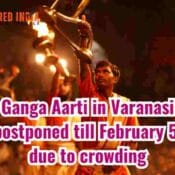
Top 10 Must-Visit Places in Ayodhya
Ayodhya, a city rich in history and mythology, is one of India’s most revered pilgrimage sites. Known as the birthplace of Lord Rama, this ancient city is a treasure trove of temples, ghats, and historical monuments. Whether you’re a history enthusiast, a spiritual seeker, or a curious traveller, Ayodhya has something special for everyone.
1. Ram Janmabhoomi Temple
The Ram Janmabhoomi Temple is the most significant and revered site in Ayodhya, believed to be the birthplace of Lord Rama, the seventh incarnation of Lord Vishnu. The temple has been central to numerous historical and political events over the years.
Highlights:
- Built on the exact site believed to be the birthplace of Lord Rama.
- The temple’s architecture is inspired by ancient Hindu temple designs.
- Upon completion, it is expected to become a major pilgrimage site for devotees worldwide.
Timings:
- 6:00 AM – 12:00 PM; 2:00 PM – 8:00 PM
Best Time to Visit:
- Morning hours are ideal for a serene experience, especially during the cooler months from October to March.
Tips for Visitors:
- Respect the sanctity of the site and adhere to temple rules.
- Dress modestly and prepare for security checks.
2. Hanuman Garhi
Hanuman Garhi is a prominent temple dedicated to Lord Hanuman, located in the heart of Ayodhya. It is believed that Lord Hanuman resided here to protect the city and its inhabitants.
Highlights:
- Situated on a hill, offering panoramic views of Ayodhya.
- Devotees believe that visiting Hanuman Garhi can fulfill their wishes.
- The temple is especially crowded on Tuesdays and Saturdays, considered auspicious for Hanuman worship.
Timings:
- 5:00 AM – 10:00 PM
Best Time to Visit:
- Early morning, especially on weekdays to avoid the crowds.
Tips for Visitors:
- Be prepared to climb a flight of stairs to reach the temple.
- Visit early in the morning to avoid the crowds.
3. Kanak Bhawan
Kanak Bhawan is a beautiful temple dedicated to Lord Rama and Goddess Sita, renowned for its stunning architecture and intricate carvings.
Highlights:
- Houses stunning idols of Lord Rama and Sita adorned with gold jewelry.
- Believed to be a gift from Kaikeyi, Lord Rama’s stepmother, to Sita.
- The temple’s serene ambiance makes it a peaceful place for meditation and prayer.
Timings:
- 7:00 AM – 11:00 AM; 4:00 PM – 9:00 PM
Best Time to Visit:
- Visit during the early morning or late afternoon to enjoy the calm atmosphere.
Tips for Visitors:
- Photography is allowed; capture the beautiful architecture.
- The temple is less crowded on weekdays.
4. Nageshwarnath Temple
Nageshwarnath Temple is dedicated to Lord Shiva and is one of the oldest temples in Ayodhya. It is believed to have been established by Kush, the son of Lord Rama.
Highlights:
- Known for its ancient architecture and historical significance.
- The temple was built to honor a Naga Kanya (serpent maiden) who found and returned Kush’s lost armlet.
- The temple is a major attraction during Maha Shivaratri.
Timings:
- 5:00 AM – 12:00 PM; 4:00 PM – 9:00 PM
Best Time to Visit:
- Morning hours, especially during festivals like Maha Shivaratri.
Tips for Visitors:
- Visit during early morning hours to experience the aarti (prayer ceremony).
- Wear comfortable footwear as you may need to walk on uneven surfaces.
5. Treta Ke Thakur
Treta Ke Thakur is an ancient temple located on the banks of the Saryu River, believed to be the site where Lord Rama performed the Ashwamedha Yagna (horse sacrifice).
Highlights:
- Houses idols of Lord Rama, Sita, Lakshmana, Bharat, and Shatrughna made of black sandstone.
- The temple’s peaceful surroundings make it a great spot for meditation and relaxation.
- It is a significant site for Hindu rituals and ceremonies.
Timings:
- 6:00 AM – 8:00 PM
Best Time to Visit:
- Evening hours for a peaceful experience and beautiful sunset views over the Saryu River.
Tips for Visitors:
- Visit during the evening to enjoy the serene ambiance and sunset views over the Saryu River.
- Respect the religious practices and rituals performed at the temple.
6. Ramkatha Park
Ramkatha Park is a beautifully landscaped park dedicated to the life and teachings of Lord Rama. The park features sculptures and scenes from the Ramayana, offering an educational and spiritual experience.
Highlights:
- Hosts cultural programs, including Ramkatha (stories of Lord Rama) and other religious performances.
- An ideal place for families to spend time and learn about the Ramayana.
- Well-maintained gardens and pathways make it perfect for leisurely walks.
Timings:
- 8:00 AM – 7:00 PM
Best Time to Visit:
- Late afternoon to enjoy cultural performances and the pleasant weather.
Tips for Visitors:
- Check the schedule for cultural programs and performances.
- Bring water and snacks, especially if visiting with children.
7. Saryu River and Ghats
The Saryu River holds sacred significance in Hindu mythology, with its ghats being important pilgrimage spots. Bathing in the Saryu River is believed to cleanse one’s sins.
Highlights:
- Naya Ghat and Ram Ghat are popular for rituals and holy dips.
- The evening aarti (prayer ceremony) at the ghats is a mesmerizing experience.
- Ideal for peaceful walks and enjoying the natural beauty of the riverbanks.
Timings:
- Open 24 hours (Evening aarti typically around 6:30 PM)
Best Time to Visit:
- Evening hours to participate in the aarti and enjoy the peaceful atmosphere.
Tips for Visitors:
- Participate in the evening aarti for a spiritual experience.
- Exercise caution while taking a dip, especially during the monsoon season.
8. Guptar Ghat
Guptar Ghat is an important site along the Saryu River, believed to be where Lord Rama took his Jal Samadhi (final immersion in water).
Highlights:
- Features several temples and shrines dedicated to Lord Rama.
- A serene spot, less crowded than other ghats, perfect for quiet contemplation.
- Offers breathtaking views of the Saryu River, especially during sunrise and sunset.
Timings:
- Open 24 hours
Best Time to Visit:
- Early morning or late evening for tranquility and beautiful views.
Tips for Visitors:
- Visit early in the morning or late in the evening for a peaceful experience.
- Respect the sanctity of the site and avoid littering.
9. Mani Parvat
Mani Parvat is a hillock with significant religious importance, believed to be a part of the hill carried by Lord Hanuman from the Himalayas to Lanka during the Ramayana.
Highlights:
- Offers panoramic views of Ayodhya and the surrounding areas.
- Small temples and shrines on the hill are dedicated to various deities.
- A great spot for photography and enjoying the natural beauty.
Timings:
- Open 24 hours
Best Time to Visit:
- Early morning or late afternoon to avoid the heat and enjoy the views.
Tips for Visitors:
- Wear comfortable shoes as you will need to climb to reach the top.
- Visit during early morning or late afternoon to avoid the heat.
10. Tulsi Smarak Bhawan
Tulsi Smarak Bhawan is dedicated to the famous poet-saint Tulsidas, who wrote the Ramcharitmanas, an epic poem based on the Ramayana. The bhawan serves as a cultural center promoting the teachings and works of Tulsidas.
Highlights:
- Hosts regular cultural programs, including Ramleela (dramatic reenactment of the Ramayana) and other religious performances.
- The library and museum showcase manuscripts and artifacts related to Tulsidas and the Ramayana.
- A peaceful place for study and contemplation.
Timings:
- 6:00 AM – 8:00 PM
Best Time to Visit:
- Evening hours for cultural performances and a peaceful atmosphere.
Tips for Visitors:
- Check the schedule for cultural programs and performances.
- Spend time in the library and museum to learn more about Tulsidas and his works.
Frequently Asked Questions (FAQs)
Q1: What is the best time to visit Ayodhya?
Ans: The best time to visit Ayodhya is during the winter months, from October to March. The weather is pleasant and suitable for sightseeing and outdoor activities. Avoid visiting during the summer months (April to June) due to extreme heat.
Q2: How can I reach Ayodhya?
Ans: Ayodhya is well-connected by road, rail, and air:
- By Road: Ayodhya is connected by a network of highways, with regular bus services available from major cities in Uttar Pradesh.
- By Rail: Ayodhya Junction and Faizabad Junction are the nearest railway stations, with regular trains from major cities.
- By Air: The nearest airport is Chaudhary Charan Singh International Airport in Lucknow, about 150 km away. From there, you can hire a taxi or take a bus to Ayodhya.
Q3: Are there good accommodation options in Ayodhya?
Ans: Yes, Ayodhya offers a range of accommodation options, including budget hotels, guesthouses, and mid-range hotels. Popular options include the Ramayana Hotel, Hanuman Garhi Guest House, and various dharamshalas (pilgrims’ rest houses).
Q4: What should I wear when visiting temples in Ayodhya?
Ans: It is advisable to wear modest clothing when visiting temples in Ayodhya. Avoid wearing shorts, sleeveless tops, or revealing clothes. It is also recommended to cover your head with a scarf or hat as a sign of respect.
Q5: Are there any special events or festivals in Ayodhya?
Ans: Ayodhya is known for its vibrant festivals and religious events:
- Ram Navami: Celebrates the birth of Lord Rama with grand processions, prayers, and cultural programs.
- Diwali: Celebrates the return of Lord Rama to Ayodhya with elaborate festivities and lighting of lamps.




